Published Date 8/25/19 8:15 PM
This article is a result of collaboration with
csglinux - Head-Fi forum member. The cooperation was so successful that we decided to extend it - to perform df-measurements of portable players with much more accurate measurement instrument. For the purpose we assembled DIY recorder based on TI PCM4222EVM. It is capable of recording music signals with ~-80dB precision, which is sufficient for most portable audio devices. The new df-measurements can be seen either on HypetheSonics web site [
https://www.hypethesonics.com/dapti-database/] or in the SE Vault [
http://soundexpert.org/vault/dpa.html].
This page is preserved for archival purposes.
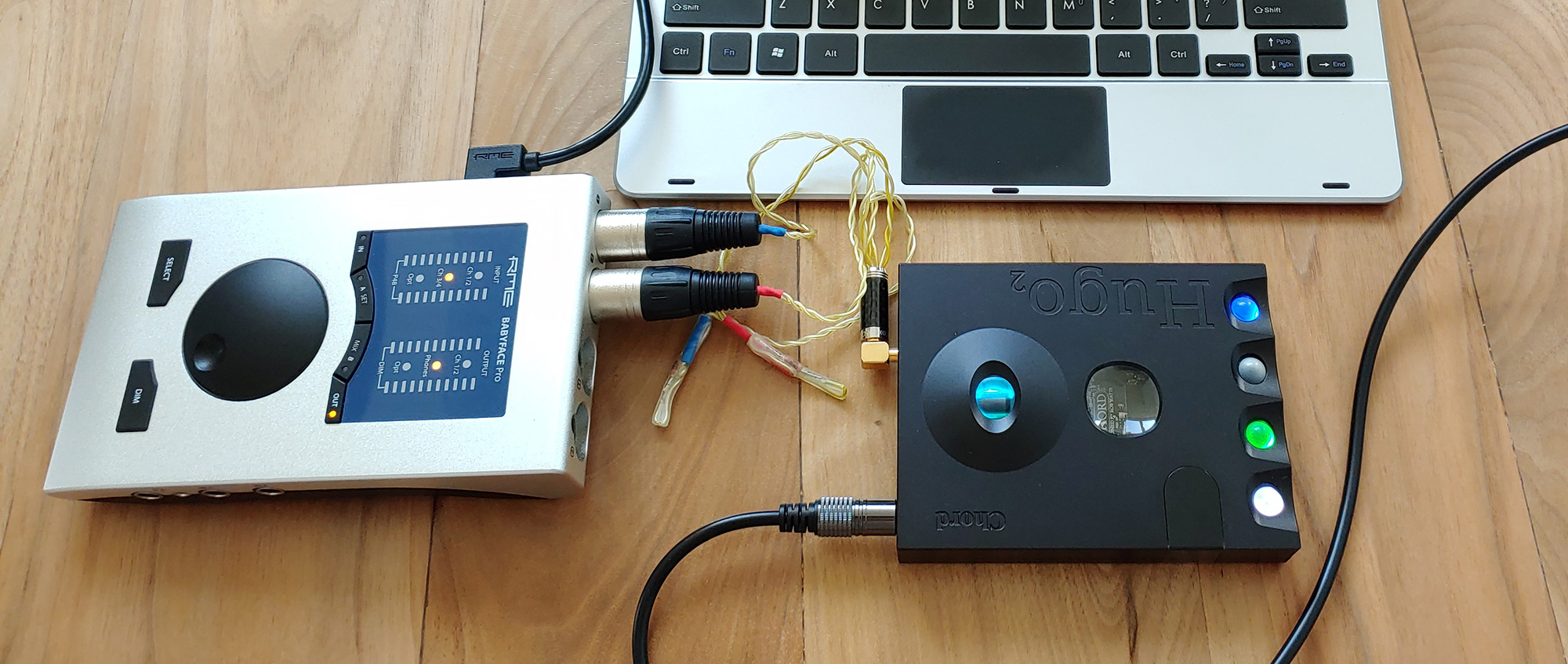
Testing setup of headfi member csglinux.
Thanks to csglinux we have df-measurements of these high quality portable players:
The list is expanding, it's limited only by the good will of the contributor and reliability of his RME Babyface Pro. The latter has better specs than SE recorder, so these df-measurements can't be just added to the portable players page [the research needed]. But we can compare them separately below. The one-page manual "How to read df-slides" is here → http://soundexpert.org/portable-players-beta2#howtoreaddfslides
Df-slides below are sorted by histogram median. Top df-slides represent portable players with higher playback fidelity.
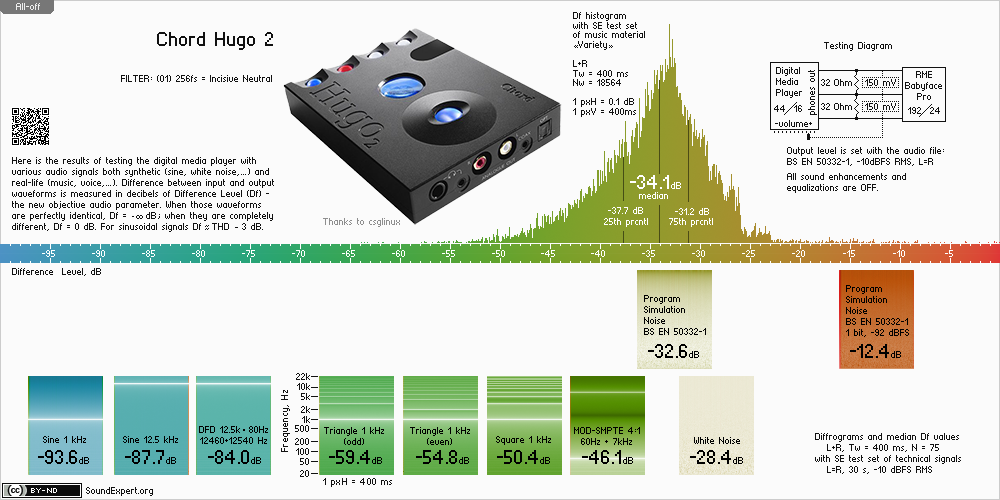
Chord Hugo 2: This is how excellent audio performance looks like - three groups of test signals and 1-bit signal alone.
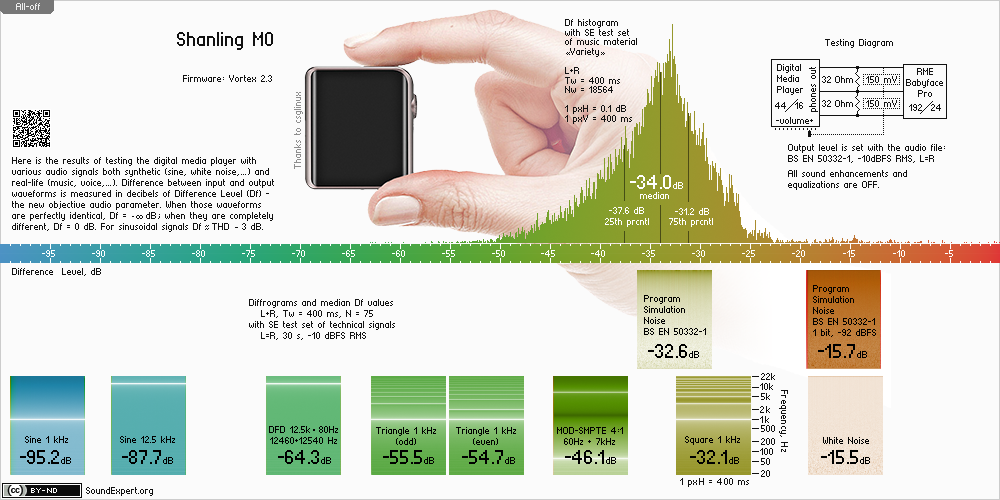
Shanling M0: Df-measurements of this player were checked several times. No mistake.
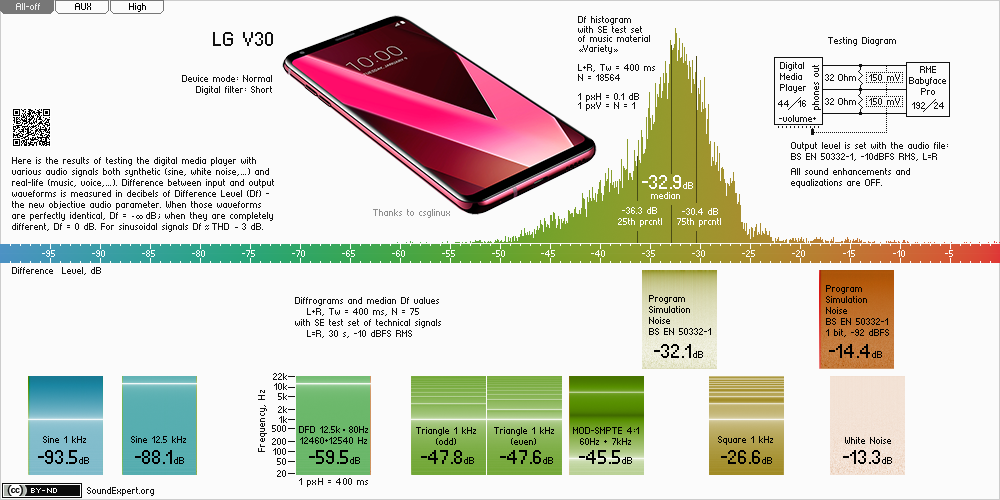
![Results of LG V30 [in AUX mode] audio measurements](/documents/10179/1529787/LGV30%28aux%29%40SE.png/e471ce17-6004-43aa-a95b-27e6e736159b?t=1567000201000)
![Results of LG V30 [in High Impedance mode] audio measurements](/documents/10179/1529787/LGV30%28high%29%40SE.png/ddcade63-7c79-4f53-b329-67aada10f857?t=1567000229000)

![Results of LG V40 [in AUX mode] audio measurements](/documents/10179/1529787/LGV40%28aux%29%40SE.png)
![Results of LG V40 [in High Impedance mode] audio measurements](/documents/10179/1529787/LGV40%28high%29%40SE.png)
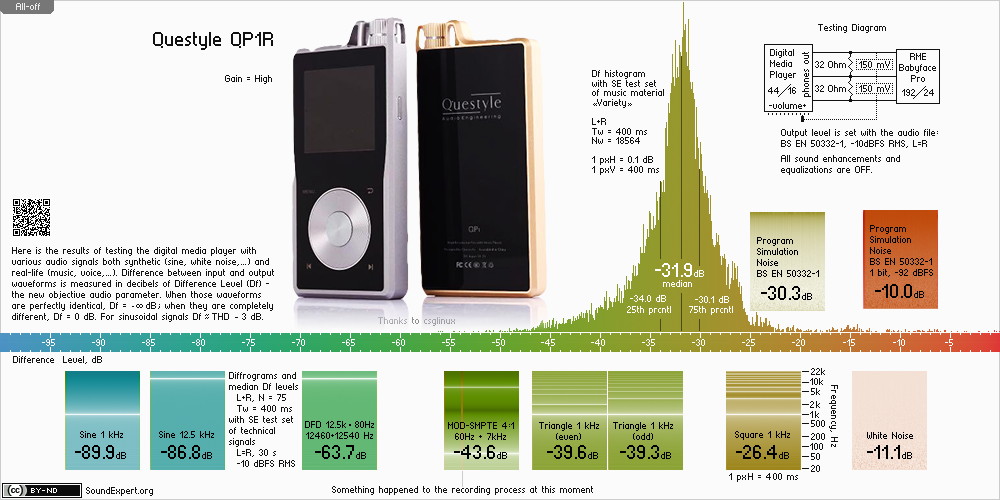
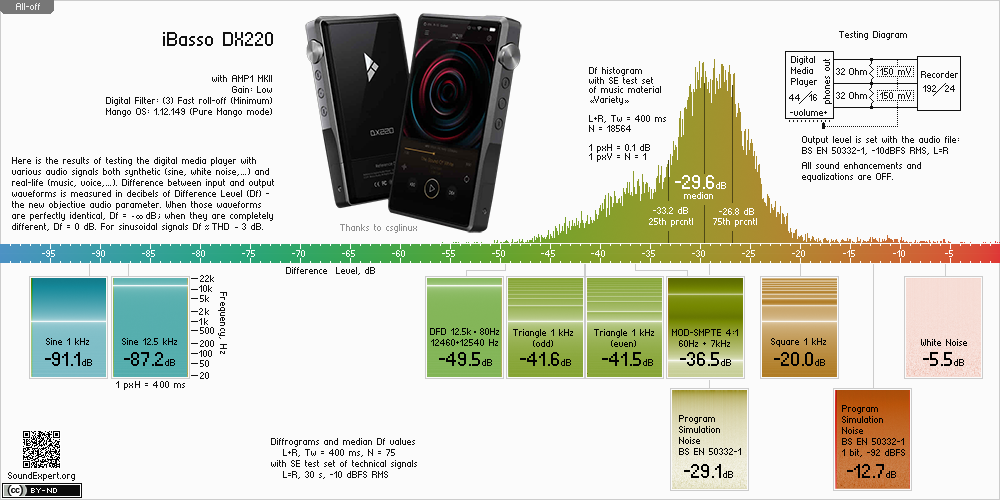
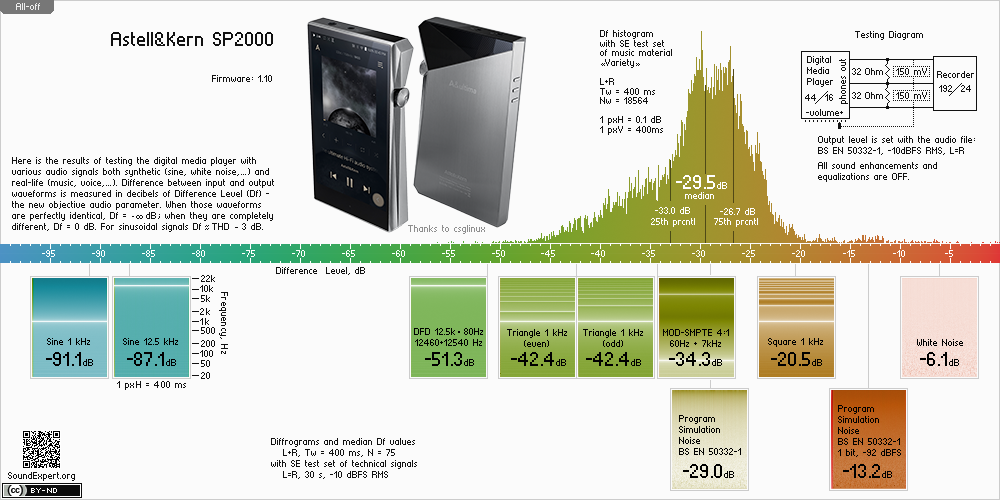

Apple Lightning to 3.5mm Headphone Jack Adapter: The only small problem is the jitter visible on Sine 12.5kHz diffrogram (vertical greener lines).
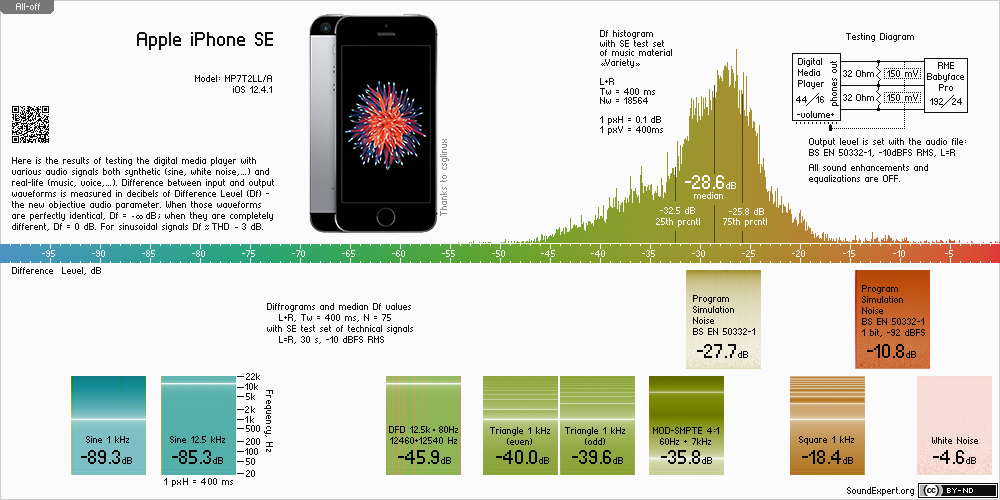

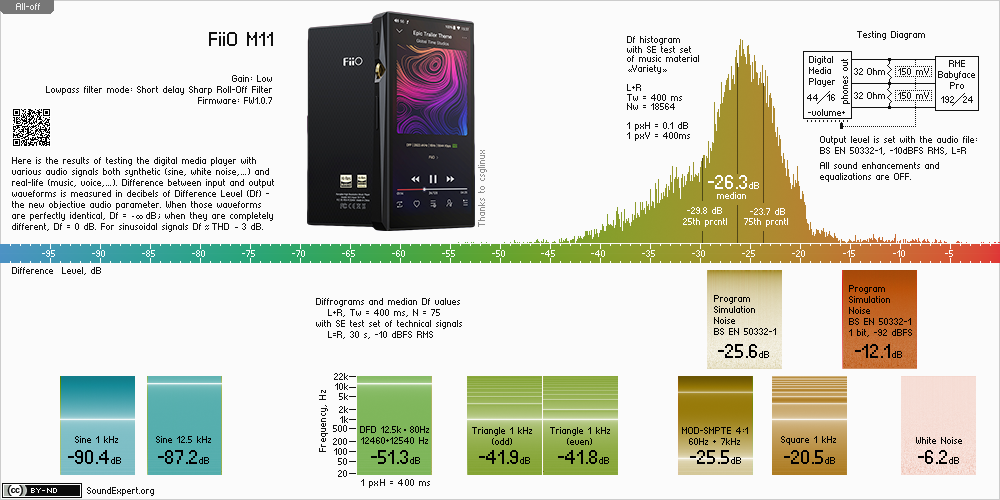
Artifact signatures of the tested devices
In df-metric artifact signatures of devices can be computed and compared with each other. So, audio devices can be grouped according to similarity of their artifact signatures. Below is 3D visualization of such groups for the tested players. You can zoom and rotate the image.
The portable players in similarity space. The closer devices to each other, the more similar their artifact signatures. Colors of devices correspond to Df values of their histogram medians. The distance (mean-corrected MAE) of 2 dB is critical for relation of Df measurements to subjective scores. For players that have close artifact signatures (distance < 2 dB) their perceived sound quality correlates well to df-measurements performed with substantial amount of real-life music material (histogram medians).